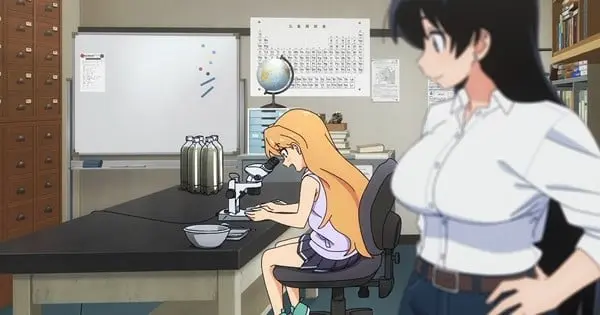Ruri Rocks Episode 4, titled “Study of Sands,” delves into the meticulous and often overlooked laboratory aspects of mineralogy as Ruri and Nagi embark on the challenging quest for sapphires. Airing on Sunday, July 27, 2025, in Japan, this episode shifts the focus from adventurous field trips to the microscopic examination of sand, revealing the hidden complexities and rewards of geological research.
The Tedious Hunt for Sapphire
The core of “Study of Sands” revolves around Ruri’s persistent, yet initially frustrating, efforts to locate sapphires. Nagi reveals that the search for these precious gems begins not with grand excavations, but with painstaking examination of river sand. Nagi previously collected a tiny sapphire specimen from a river near her university, providing the only clue to a potential sapphire location. This revelation pivots the narrative from exciting outdoor adventures to the more serene, but equally important, laboratory work.
Ruri’s Growing Dedication and Ingenuity
Despite the tedious nature of poring over sand with a microscope, Ruri’s enthusiasm for mineralogy continues to grow. While initially impatient and prone to seeking shortcuts, Ruri demonstrates her evolving dedication and even finds a more efficient method to aid in the search. With the help of Imari, another mineralogy graduate student, Ruri discovers that using a magnet can effectively remove magnetic particles from the sand, significantly reducing the amount of material she needs to examine. This small innovation highlights Ruri’s developing understanding and proactive approach to geological research.
Imari’s Contributions and Fluorite Research
Episode 4 also continues to showcase Imari’s work and her growing interaction with Ruri and Nagi. Having previously found fluorite crystals that glow under black light, Imari is encouraged by Nagi to take the lead on a research paper about them. The episode reveals Imari’s progress in identifying different minerals, including a discovery of what she believes to be scheelite in a rock containing fluorite, further emphasizing the educational aspect of the series.
The Balance of Fieldwork and Lab Work
“Study of Sands” effectively balances the allure of fieldwork with the necessity of lab-based research. While Ruri enjoys collecting samples in the field and has even begun acquiring her own equipment, the episode underscores that significant geological discoveries often require meticulous, time-consuming analysis indoors. The contrast highlights the comprehensive nature of mineralogy, showcasing that both physical exploration and detailed scientific examination are crucial for uncovering the Earth’s hidden treasures.
Broader Implications and Future Adventures
As Ruri continues her search for sapphires, examining sand from various tributaries to trace the gems to their source, the episode reinforces the scientific methodology behind mineral exploration. This detailed approach to the “treasure hunt” for minerals is a hallmark of Ruri Rocks, which is based on Keiichiro Shibuya’s manga, Ruri no Hōseki, also known as Introduction to Mineralogy. The anime, produced by Studio Bind and directed by Shingo Fujii, continues to provide an engaging and educational look into the world of geology.
The episode concludes with Ruri finding a second grain of sapphire, solidifying her progress, even as the ultimate source remains elusive. The ongoing search for the sapphire source, and the potential for Ruri’s friends to become more involved in her mineralogy passion, sets the stage for future episodes.









